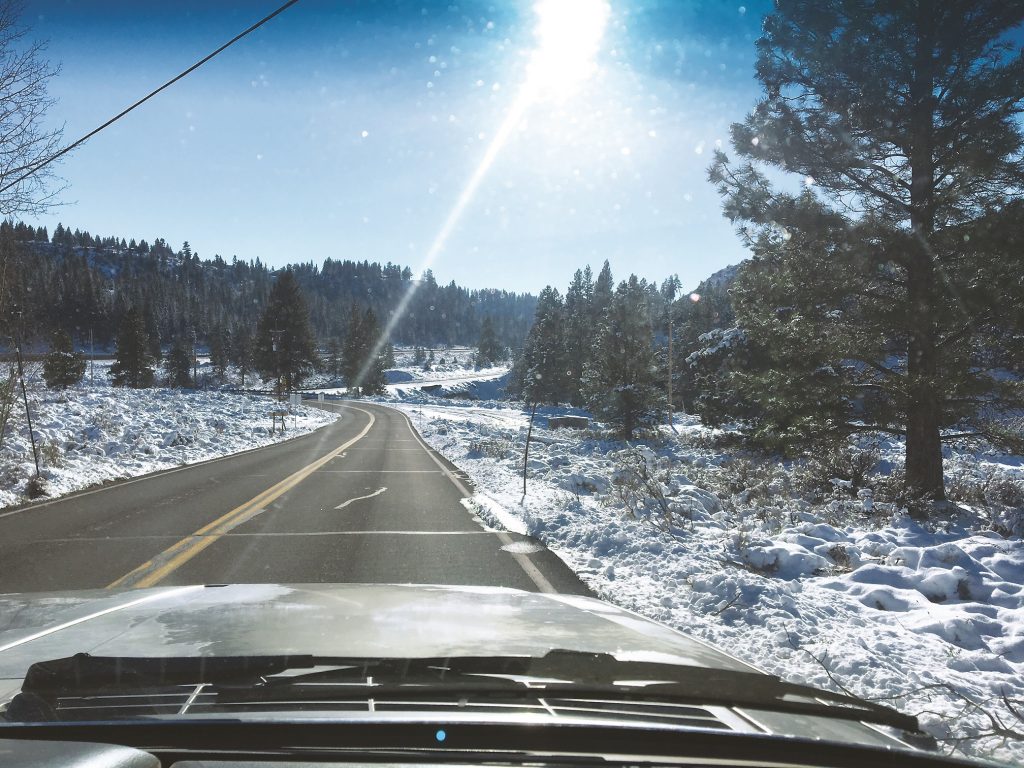For many of us in high altitude and northern regions, we’ve got to brave the elements and clock-in on time regardless of how heavy the snow is falling.
But with a little preparation, you’ll be armed for snow and ice-covered roadways.
Your first step?
Check to make sure your vehicle is in tip-top condition. A poor-shifting automatic transmission might be annoying on clear roads, but be downright perilous on ice. A hard-starting engine in the summer might be a no-starting engine in sub-zero temperatures. Before the snow flies, you’ll want to check your battery to make sure it’s corrosion-free and all connections are secure. If it’s past its warranted lifespan, you may want to replace it now.

Beyond inspecting the major systems (brakes, cooling, heating, etc.), it’s the perfect time to change out your windshield wipers and inspect for your wiper fluid reservoir for cracks. Also, double-check your headlights and taillights to make sure they’re working and properly aimed. If you’ve got aging, foggy headlights, a restoration kit is a smart way to recover light output.
Check your coolant system for a proper mix of antifreeze. Frozen coolant could do major damage to your engine block and cooling system. Even in a garage, a cold winter’s night could mean below-freezing temperatures. On a related note, make sure to stock up on windshield de-icer. It will help clear a snowy (or salt-covered) windshield, while protecting against frozen lines and nozzles.
Perhaps the most important thing is to check your tires. You want to make sure you have traction, and that means more than judging the condition of your tread. Even brand new tires can be perilous in the snow if they’re not the proper tread type. You want to ensure that the tires you’re riding on are matched to the driving environment. If you live in a heavy-snow area, then buying a set of dedicated snow/winter tires is cheap insurance when the weather turns cold.
In addition to vehicle systems, there are a few more winter weather essentials. For starters, don’t rely on the freebie ice scraper you got from the local radio station—get a sturdy one for icy windshields and a brush for snow-covered hoods and trunks.
Slushy, salt-filled puddles have been known to ruin interiors. A nice set of rubber floor mats will trap water runoff and protect your carpeting. It will also make your interior easier to clean. On the subject of floor mats: they can also make effective emergency traction devices, too. If you’re stuck in a snowbank, an extra set of floor mats wedged under your tires might give you the extra grip you need to get rolling. Some companies even make dedicated traction mats to help get you unstuck.
Make sure you have a vehicle roadside emergency kit that includes a first aid kit, flashlight, some snack bars, jumper cables, flares, basic hand tools, cell phone charger, and heavy blanket. It may not be realistic to deck yourself out in alpine gear every time you drive, so make sure to pack extra cold weather gear and toss a bundle in your trunk for emergencies. That includes gloves/mittens, scarf, boots, pants, heavy cap, and maybe an extra sweatshirt/sweater.
Now that you’ve done some prep work, you’ll be ready to scoff at Old Man Winter’s attempts to ruin your commute. Just remember to drive safe, attentive, and focused—your boss will admire your dedication!

Comments